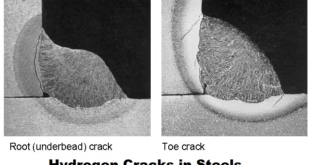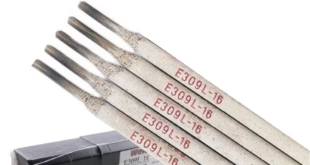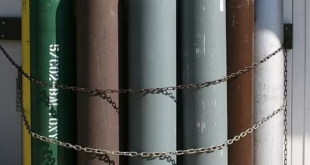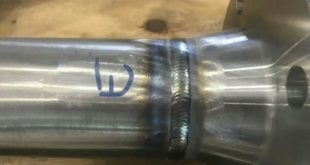Back Gouging in Welding: A Comprehensive Guide
Table of Contents
ToggleIntroduction
Back gouging, often considered a critical step in the welding process, involves the removal of metal from the backside of a weld to ensure complete joint penetration and improve weld quality. This technique is paramount in welding because it helps achieve a defect-free weld by eliminating impurities and ensuring the integrity of the weld seam. Let’s delve deeper into the nuances of back gouging, its methods, applications, and benefits.
What Happens During Back Gouging?
When a welder performs back gouging, they are essentially creating a groove or channel along the backside of a weld. This groove allows for subsequent welding passes to penetrate fully and fuse both sides of the joint, eliminating any defects or impurities that might have been present in the initial weld pass. By removing the backside material, the welder exposes the root of the weld, ensuring that the final weldment is robust and has no hidden flaws.
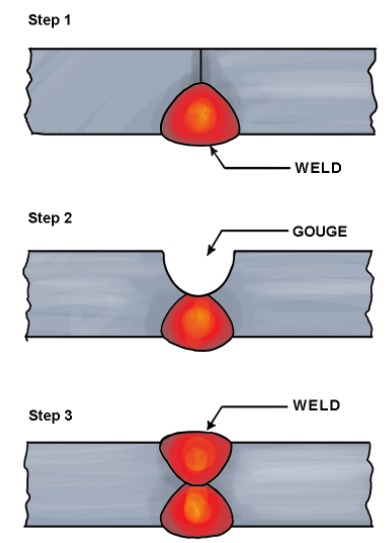
Types of Back Gouging Techniques
Manual Back Gouging
Manual back gouging is performed by a skilled welder using tools like carbon arc gouging torches or grinding wheels. This method allows for precise control over the material removal process, making it ideal for intricate welds or situations where automated systems might not be feasible. However, it requires significant skill and experience to perform effectively.
Automated Back Gouging
Automated back gouging employs machinery to remove the metal, providing consistent and efficient results. This method is commonly used in industrial settings where large volumes of welding are required. Automated systems can include robotic arms equipped with plasma cutters or grinding attachments, ensuring uniformity and reducing the potential for human error.
Methods of Back Gouging
Back gouging can be performed using various methods, each with its own set of tools and techniques. Understanding these methods is crucial for selecting the appropriate approach based on the material and application requirements.
Manual Back Gouging
Manual back gouging involves the use of handheld tools operated by a skilled welder. This method is labor-intensive but allows for precise control over the gouging process.
Tools Used
- Chisels and Hammers: Traditional tools used for gouging, particularly in small or intricate areas.
- Grinders: Equipped with abrasive wheels, grinders are used to remove material through mechanical action.
- Carbon Arc Gouging Rods: These rods use an electric arc to melt and remove material. The welder manually guides the rod along the desired path.
Automated Back Gouging
Automated back gouging utilizes advanced machinery to perform the task with minimal human intervention. This method is ideal for large-scale operations where consistency and efficiency are paramount.
Equipment and Technology
- Robotic Arms: Often used in automated systems, robotic arms are programmed to follow precise gouging paths. They provide consistent results and can operate in hazardous environments, reducing risk to human workers.
- CNC Machines: Computer Numerical Control (CNC) machines are used to automate the gouging process. These machines can be programmed with detailed specifications to ensure precise material removal.
- Plasma and Laser Cutting Tools: These tools use high-velocity jets of ionized gas or focused laser beams to cut through metal. They offer high precision and can handle various materials.
Techniques in Back Gouging
Each method of back gouging employs specific techniques tailored to the material and the desired outcome.
Carbon Arc Gouging
Carbon arc gouging uses a carbon electrode to create an electric arc, which melts the metal. Compressed air is then used to blow away the molten material, leaving a clean, gouged surface. This technique is popular due to its speed and efficiency.
Plasma Arc Gouging
Plasma arc gouging involves a plasma torch that generates a high-temperature plasma jet. This jet is directed at the metal surface, melting and removing material. Plasma arc gouging is known for its precision and ability to cut through various types of metal.
Grinding
Grinding is a mechanical process that uses abrasive wheels to remove material from the metal surface. This technique is often used for finishing touches and preparing the surface for subsequent welding. It is a slower process compared to arc gouging but provides a smooth finish.
Challenges and Considerations
While back gouging is an essential process for achieving high-quality welds, it does come with its own set of challenges and considerations. Understanding these can help welders and engineers mitigate potential issues and ensure safe and effective operations.
Heat Management:
- Warpage: Excessive heat can cause the metal to warp, especially in thinner materials. Controlling the heat input is crucial to avoid distorting the workpiece.
- Thermal Cracking: Uneven cooling can lead to thermal stresses and cracks in the material. Proper technique and controlled cooling rates can help prevent this.
Consistency:
- Uniform Depth: Achieving a consistent gouging depth is vital for ensuring complete penetration and uniform weld quality. Inconsistent depth can lead to weak points in the weld.
- Surface Finish: The quality of the gouged surface can affect the subsequent welding pass. Rough or uneven surfaces might require additional preparation, such as grinding, to smooth out the area.
Material-Specific Challenges:
- Different Metals: Different metals react differently to the gouging process. For example, stainless steel can be prone to carbide precipitation if not gouged correctly, leading to reduced corrosion resistance.
- Contaminants: Impurities or coatings on the metal surface can affect the gouging process, leading to poor quality gouges or introducing defects into the weld.
Tool Wear and Maintenance:
- Wear and Tear: Tools and equipment used in back gouging, such as carbon electrodes and grinding wheels, can wear out quickly, especially under heavy use. Regular maintenance and timely replacement are necessary to maintain gouging quality.
- Equipment Calibration: Ensuring that automated equipment is properly calibrated is crucial for maintaining consistency and accuracy in the gouging process.
Post-Gouging Steps
After back gouging, it’s crucial to inspect, clean, and prepare the gouged area for final welding to ensure high-quality, defect-free welds.
- Inspection: Examine the gouged surface for impurities, defects, or inconsistencies using visual checks and non-destructive testing methods like ultrasonic, magnetic particle, and dye penetrant testing.
- Cleaning: Remove slag, metal particles, and debris with tools like wire brushes, chipping hammers, or compressed air. Ensure all grinding residue is cleaned off, smooth the surface, and use a degreasing agent to remove oils and grease.
- Preparation for Final Welding Pass: Correct any joint fit-up issues, apply tack welds for alignment, and preheat the material if necessary. Adjust the welding machine settings and select the appropriate electrode or filler material. Ensure all safety gear is worn and proper ventilation is in place.
- Final Welding Pass: Execute the weld using a consistent technique to ensure uniform bead appearance and penetration. For thicker materials, multiple passes may be needed. Monitor heat input and inspect each bead to correct defects immediately.
- Post-Welding Inspection: Inspect the completed weld for surface quality, checking for visible defects like cracks or porosity. Ensure the weld bead is uniform and properly fused to the base material. Use non-destructive testing to confirm weld integrity and detect hidden defects.
FAQs
What is the main purpose of back gouging?
The main purpose of back gouging is to remove impurities and ensure complete joint penetration, resulting in a stronger and more reliable weld.
Can back gouging be performed on all metals?
Yes, back gouging can be performed on various metals, including steel, aluminum, and stainless steel, using appropriate methods and tools.
How does back gouging affect the overall weld strength?
Back gouging improves overall weld strength by eliminating defects and ensuring complete penetration, thus enhancing the structural integrity of the weld joint.
Is automated back gouging better than manual?
Automated back gouging offers consistency and efficiency, making it ideal for large-scale operations. However, manual back gouging allows for precise control, which is beneficial for intricate or smaller welds.
What safety gear is essential for back gouging?
Essential safety gear includes gloves, face shields, protective clothing, and proper ventilation to manage fumes and protect welders from high temperatures and harmful substances.
Conclusion
Back gouging is a crucial process in welding that significantly enhances the quality and integrity of weld joints. By understanding the techniques, applications, and benefits of back gouging, welders can achieve stronger, more reliable welds. Whether performed manually or with automated systems, back gouging ensures that welded structures meet the highest standards of safety and durability.
 Welding of Welders All about Welding and Welders
Welding of Welders All about Welding and Welders
